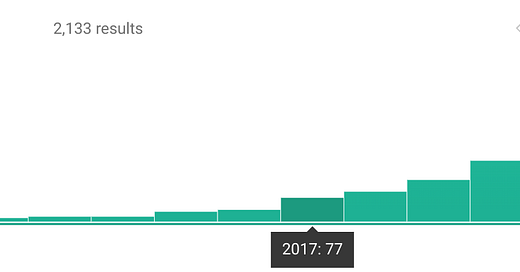A week ago, we got the release of the Dietary Guidelines Advisory Committee’s Scientific Report - to the uninitiated into the weird processes in the field of nutrition, this is not, in fact, the actual Dietary Guidelines for Americans, but the scientific report that is turned over to staff at HHS and USDA that will ultimately write the guidelines. Each DGAC report iterates on the previous report and has its own sort of flavor, with this edition retaining a strong focus on body weight/chronic disease as well as life stages (the previous 2020-2025 DGAs expanded the focus from ages 2+ to 0-2yo, focusing for the first time on Pregnancy nutrition and early life feeding practices). This new report also has a strong focus on health equity (will be interesting to see whether this is retained in the finalized guidelines given the current culture around DEI). Click these links to explore the full list of scientific questions as well as the related subcommittees that ultimately defined this DGAC report.
Every year, something from the report (this year’s is 421 pages) makes it to the media, and this year, it’s not so surprisingly the topic of “ultraprocessed foods” (UPFs). The Washington Post covered the issue, namely that the DGAC report “punted” on the issue i.e. they didn’t come out guns blazing saying to avoid eating them. Some nutrition advocates, including politicians, have advocated for recommending Americans limit intakes of UPFs, citing the growing body of evidence linking intakes to weight gain/obesity, cardiometabolic disease and cancer - but the committee found the data ‘limited’. What’s the deal? Does the DGAC want us eating poptarts?
Before we dive in, let’s all take a moment to honor that we are not talking about whether eggs are healthy this cycle.
*1 min passes*
UPFs have been all the rage, beginning in 2009 when the Brazilian epidemiologist, Carlos Monteiro, proposed categorizations for the degree of processing of foods (originally 3 groups at the time). There are now 4 categorizations, defined by the "NOVA” system: group 1 are unprocessed or minimally processed foods, close to their whole/natural state; group 2 are processed culinary ingredients, that are derived from but still close to their natural state - things like, butter, sugar and salt; group 3 are processed foods, essentially foods that are made from group 1 by adding group 2 components, including various preservation and cooking methods (e.g. canned fruit in a syrup); group 4 are ultraprocessed foods, made almost exclusively from substances derived from foods and additives, and quite far from their natural state - these include many prepackaged foods, meat products, frozen dinners, and soft drinks. UPFs have a big focus on the addition of not only sugar/oil/salt but also individual food components (e.g. extracted proteins from dairy like casein; extracted starches like maltodextrin) and additives (e.g. preservatives, stabilizers, antioxidants, colours, flavours, etc). We’ve seen a huge increase in interest in the scientific literature tackling the topic of UPFs since 2009 and its unsurprising that it’s reached a critical mass at the point which the DGAC has to consider and comment on it.
To many individuals, especially in a RFK Jr/MAHA world, the definition of UPFs probably sounds pretty clear cut and dry - foods that fit into that categorization are sodas, many frozen dinners, desserts, prepackaged snacks, etc etc - all sound like things that probably shouldn’t make up a huge portion of your diet. Why did the DGAC sidestep making a strong recommendation against them might - are they totally unreasonable? bought out by BigFood & Pharma? Spoiler: I think they took the right conclusion, for several reasons




